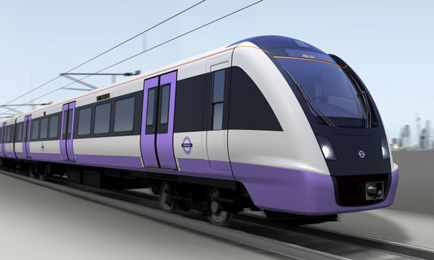Climate change will bring flood of problems
I have been following the letters in PE regarding climate change and I have to say that some of the contributions have been excellent. I am however disheartened by the results of your 8 Questions (PE August) which found that 25% of respondents don’t worry about our use of fossil fuels causing difficulties to future generations due to climate change.
As engineers we need to be guided by science. Christos Dimitroulas states in his letter (PE July) that 97% of experts support the view that climate change is caused by human activity. There will always be the exception. Some people still believe the earth is flat!
We hear a lot about ‘catastrophic climate change’ but what does this mean? Strangely, the mainstream media is remarkably silent on this point. My own understanding is that rising sea levels will at some point flood the homes of millions, if not billions, of people on this planet – submerging major cities such as London. Millions of hectares of productive farmland will be submerged, along with port, power, industrial and transport infrastructure. Meanwhile, more hostile weather will batter much of what remains.
This would be more than an economic catastrophe. It would become increasingly difficult to provide the basics of food and shelter to a rising world population, and the UK would be particularly badly affected. It may make the austere world we currently live in seem more like paradise.
Am I therefore right in thinking that 25% of engineers would not worry about this?
Iain Siekman, Hamilton, Lanarkshire
Fracking offers a solution
I was encouraged by Lee Hibbert’s Editor’s comment (PE September). There has been insufficient emphasis put on our continuing dependence on fossil fuels and with our coal-fired power stations closing we shall become increasingly dependent on nuclear and gas stations.
In Scotland, the coal-fired station at Longannet is closing next year and the proposal to replace it with a gas-fired station is now not going ahead. Our two nuclear stations have had their lives extended, hopefully until 2025, and the Scottish government will currently not allow any future replacement of nuclear stations to proceed.
This may leave Scotland with no baseload generation of electricity and having to depend on supplies from England and Wales.
I would take issue with one statement regarding fracking, namely: “Meanwhile, fracking has many regulatory and development obstacles to overcome before shale gas makes any sort of impact on indigenous energy supplies”. I am not sure what these obstacles are and would suggest reading the Independent Expert Scientific Panel Report on Unconventional Oil and Gas which was commissioned by the Scottish government and submitted in 2014, which gives very clear conclusions.
This report makes clear that fracking could be undertaken by complying with UK regulations and with any additional safeguards that may be considered necessary. Unfortunately, the Scottish government has imposed a two-year moratorium on fracking for no good reason.
If fracking were to go ahead in Scotland it would allow many of those workers in the oil and gas industry who are being made redundant to transfer to the unconventional oil and gas sector.
Charles Scott, Edinburgh

Switched off
Lee Hibbert’s Editor’s comment (PE September) included a realistic examination of the options for electricity generation in the coming years. It gave a breakdown of the current energy sources and quoted wind power supplying 4.7% on 20 August and 7.5% on 25 August. I checked on 8 September and the contribution varied between 1% and 1.5% through the day.
I find it incomprehensible how so many IMechE members (judging by the content of the PE Letters column) can believe that a post-industrial society dominated by electronic controls, power and communications could survive any length of time if it had to rely on a power source with such abysmal levels of availability.
Solar power may make a seasonal contribution, but large wave-power systems appear decades away – even if the environmental impacts can be managed. The future mix must be dominated by gas and nuclear power.
Paul Spare, Davenham
Bumpy ride
Martin Walters asked why it was now so common for car suspension coil springs to fracture (Letters, PE September). When a friend of mine took his Saab in for its annual service, the garage pointed out that both front suspension springs had failed in this manner.
They said this was now a very common occurrence, and, in their opinion, it was due to speed bumps, following the installation of these features so widely around the roads of our towns and cities. They are even on bus routes, and, while vehicles with a wide track can often straddle the ‘cushion’ type, parked vehicles can make it impossible to avoid the bumps. Even at speeds below the prescribed limit, not only the springs, but the body structure must also suffer (as well as the passengers!).
Richard Stanghan, Luton
Total washout
From my many years subscribing to PE I am well used to the old arguments about protecting the title of ‘engineer’. But I’ve long since tuned-out of the debate as it seems nobody is really interested in taking such an important step seriously. I’ve even stopped correcting signs left on broken photocopiers.
However, this morning a job opportunity was sent to my inbox for a commercial drainage engineer with jet-washing experience. If this is the sort of job people think engineers do, we must have reached the very bottom of the employment (cess)pool.
Mike Felstead, Crediton, Devon

Who needs drivers?
I cannot have been the only reader to have been struck by the contrast between the articles in PE August on driverless cars and train carriages for Crossrail.
On one hand, a lot of investment is being made to resolve the very difficult problem of creating driverless cars and, on the other, an immense investment is being made in Crossrail where there’s no mention of the trains being driverless.
The train article emphasises that Crossrail didn’t want a revolutionary design and that the fleet should be based mainly on existing technology. Surely driverless trains are existing technology?
I can well imagine that the RMT union and its members are relishing the prospect of further inflating the salaries of their overpaid drivers by holding Transport for London and the suffering public to ransom. After all, that’s what has been successfully demonstrated so far.
Royston Edwards, Cobham
Energy storage is the key
In “Offshore opportunities” (PE September) the statement is made that “Contrary to widespread opinion, nuclear power does not solve the flexibility problem”.
I find this quite astonishing in that I have never previously heard any suggestion that nuclear power was a flexible power source and, quite to the contrary, it has always been described as a baseload which would operate continuously unless there were technical problems.
Flexibility has always derived from hydro plant and the spinning reserve of fossil-fuel generation, all of which has an associated cost. I have often wondered whether the cost of standby generation is included in the quoted cost of wind generation. I suspect not.
With the increasing proportion of intermittent renewables in our energy mix we are faced with the possibility of building new plant which is specifically destined to stand idle when the wind blows and the hidden costs of wind power will further increase. These costs can only be mitigated by energy storage and as such I fully support the work described in “Offshore opportunities” to create such storage.
Unfortunately I am not aware of any viable storage system which can store sufficient power to cover national consumption for more than a few minutes (if that). Without such storage the further introduction of intermittent renewables can only disproportionately increase our energy costs and reduce our international competitiveness.
We need large-scale storage much more than we need new forms of intermittent renewables and I would urge that as a nation we switch our development focus from generation to storage.
Tom Heath, Fortrose
Corridors of power
There has been much debate in PE about the need for more engineers to become MPs. At the moment, politicians prefer economics, an inexact science, which after two centuries has no laws, just many theories – some of which offend intelligence.
Action is needed. I would welcome more MP engineers. Perhaps we might also lobby for Lords reform with a new chamber to have a majority of engineers and scientists with experience and evidence of questioning minds. The Lords should question everything and ensure the long-term consequences that go hand-in-hand with science and maths being put above short-term theoretical economics.
John Allison, Maidenhead, Berkshire
Mission impossible
I would agree with Lord Peston’s comments that there appears to be no possibility of producing a viable power station based on the Tokamak design (News, PE August).
This work has been going on since the 1950s and we are currently told that there will be a commercially sustainable outcome in the next 40 to 80 years. It seems that there are large numbers of people making careers out of failure.
Kenneth Barnsley, Belper, Derbyshire

Sunset industry
I see in PE magazine that there is a lot of talk about renewable energy. I got solar panels fitted in May this year and the supplier has sent me emails in the last few weeks saying how the government is drastically reducing the feed-in tariffs for energy creation using solar panels.
I got my panels with feed-in tariffs of 13.39p for production and 4.85p for half of the produced amount being deemed to have been exported into the grid. These figures are fixed and will be paid for 20 years and it’s predicted that I will pay off my £6,000 system in six or seven years. However, if you get solar panels now, the tariffs are 12.92p for every kilowatt generated and 4.85p for every kilowatt exported. By 1 October, the generation tariff reduces slightly to 12.47p and the export stays at 4.85p.
However, the government is proposing that from 1 January all new systems installed will only get 1.62p for generation and zero for export. This means that anyone buying a system won’t ever get a return on their investment.
This may well be the end of the industry and it seems to be a very short-sighted move by the government which I thought was trying to reduce carbon emissions.
Scott Mitchell,
Crossgates, Fife
Gas makes more sense
It does not make strategic or economic sense for the UK to proceed with Hinkley Point nuclear power station. Such large-scale nuclear projects always exceed budget by factors of 2 or 3, and never meet the planned schedule.
The reported “guaranteed” price per MWh is twice that currently paid by UK consumers and this price is reported to be “inflation-proof”. A very small proportion of the project costs will be cycled through the UK manufacturing economy, perhaps some concrete, rebar and a few construction staff.
Nuclear power station safety is still not assured, after some 60 years of experience, and decommissioning and spent fuel disposal costs are gigantic and never ending.
It makes more sense to use natural gas to provide the electricity generating capacity. The economic advantages of natural gas generating stations are clear: Natural gas turbine combined-cycle power stations have thermal efficiencies of 60% or more, twice that of a traditional power station.
The technology is well proven and is inexpensive to build due to standardised designs and competition among vendors, and the stations can be built in less than four years, on schedule and on budget.
By distributing power stations around the country, feeding off existing high-pressure gas mains, electrical transmission line losses are minimised. A larger number of smaller stations allows for redundancy in depth, avoiding major shutdown events and they can be dual-fuel (oil-fired with NOx reduction) giving more redundancy.
Ian A Crossley,
Exmouth, Devon